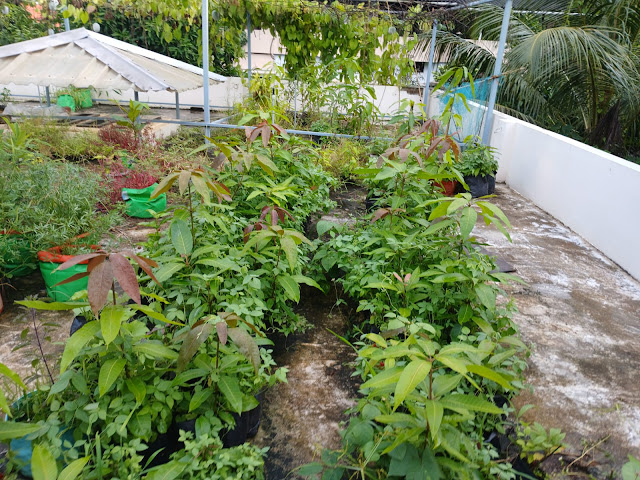I used to grow happy hill rice in grow bag on terrace. While counting the rice grains from a single plant, found that each head is easily 200 grains, like that 3-4 heads are there from each plant. Assuming 3 heads, we get 600 grains from a single plant, this is very conservative calculation, it can easily go upto 1000 from a single plant.
I was thinking if the productivity is so much growing food should be manageable. The major task in rice farming is about weeding in 0.1 acre and this has to be done at least twice. I thought this should be doable even if I have to do it by myself.
Mulching can be done in advance to make sure that weeds does not grow, this has to be monitored closely and if there are some areas with more weeds, that area has to be mulched more.
Some more calculations...
Average weight of a rice grain is 20mg, as per AI of Whatsapp. If we sow 500 gms of seeds and the productivity of each plant is 600 grains, simple calculation would give 600 * 500 gms = 300,000gms i.e 300Kgs. This is assuming all the plants survive and all give 600 grains. Anyway we have discounted to 600 grains, which can be boosted to even 800, if we think practically. At least 250Kgs should be a reasonable harvest to achieve.
1 acre is 43560 sqft, and 0.1 acre is 4356 sqft, if we have 500gms and each grain is 20mg, there are 25000 grains...i.e 25000 plants in 4356 sqft, i.e 5.7 plants in per sqft, which is quite reasonable.
Also we have to make sure that field is completely covered with mulch in the summer and before sowing remove all the weeds manually, there will be minimum if there is good amount of mulch.

















































